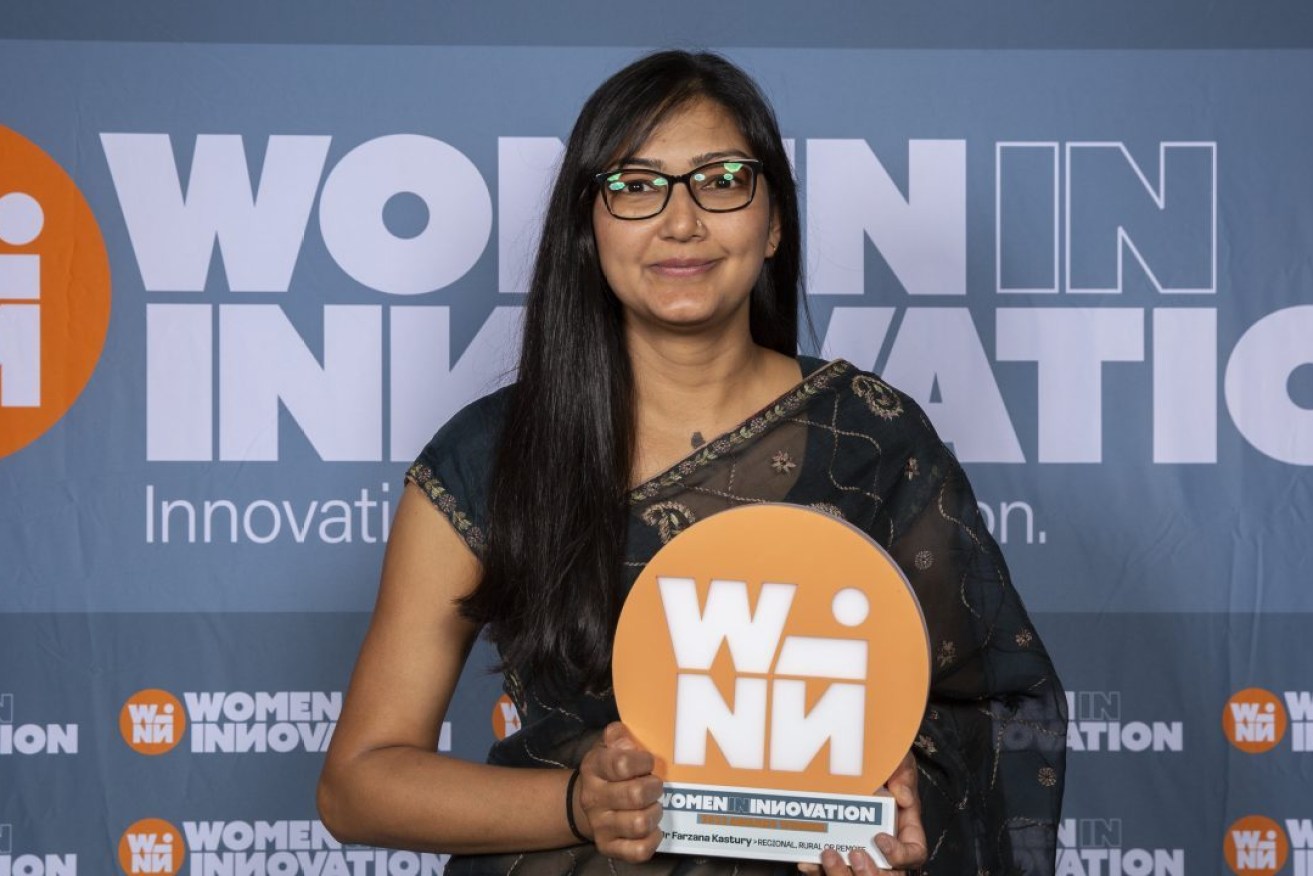Watch this space: These are the SA women changing the world
Twelve inspiring women were recognised for their groundbreaking work at this year’s Women in Innovation Awards, including environmental biogeochemistry researcher Dr Farzana Kastury.

Photo: WINN/Heidi Wolff
Since its inception in 2014, the Women in Innovation Awards program has served to highlight and honour some of South Australia’s most remarkable and innovative women.
Women in Innovation (WINN) president Paula Turbill said the not-for-profit organisation is “deeply passionate about supporting women who are unafraid to break boundaries, experiment and be their authentic selves”.
“We believe that the diversity of perspectives and experiences that women bring to the table is a driving force for positive change,” she said.
This year’s twelve award winners contribute in many fields, from being at the forefront in the battle against one of the world’s most lethal brain cancers, to driving innovations into workplace bullying prevention, to spearheading an AI research network for the Department of Defence. See the full list below.
Among the winners is Dr Farzana Kastury, an environmental biogeochemistry researcher, who has developed a technology to reduce the bioaccumulation of lead in soils.
Kastury is based at the University of South Australia’s Future Industries Institute at Mawson Lakes.
“Lead, unfortunately, is very pervasive [and] it’s not only in areas that have been directly impacted by smelting or mining,” Kastury said.
“It has been spread everywhere by the use of leaded gasoline and lead based paint.”
The World Health Organisation notes children absorb 4-5 times the amount of lead ingested compared to adults and there is no known safe concentration in the blood.
“I’ve always been really passionate about fixing all of the anthropogenic pollution that is part of modern life,” said Kastury.
Her interest in lead decontamination was sparked when, as a PhD candidate at UniSA, she learnt that one of the world’s largest lead smelters was “two hours north” from where she lives in the Barossa Valley, and that none of the existing lead decontamination methods was highly effective.
Port Pirie has a Targeted Lead Abatement Program. In regions like Broken Hill, capping materials are used to contain mountains of contaminated soil, while education programs and blood monitoring programs are in place.
In the United States, lead is one of four legacy contaminants to be prioritised by the Environmental Protection Authority (EPA) through its Superfund clean-up program.
Kastury is collaborating with the authority to find a long-term solution to the lead problem.
Industry-partnered testing has shown Kastury’s plumbojarosite technology can remove 93 per cent of the contaminant.
The challenge is moving it from lab-based remediation of 50 kilograms of soil to industrially-scaled, on-site remediation that remains both cost-effective and environmentally friendly.
“That’s the next phase of this research,” said Kastury.
“I’ve proved that the technology works in the long-term and that it’s safe for a soil environment.
“Now the next step is how to actually do it – the logistics, equipment and costing.”
While the technology has been developed to deal with lead bioaccumulation, it could potentially be used for arsenic and Kastury is collaborating with colleague Professor Albert Juhasz and Victoria’s EPA on research.
Arsenic is an issue around Bendigo, Ballarat and other legacy sites in regional and remote Australia; around Bendigo, contamination has been found to be more than ten times greater than the national guidelines for safe soils.
The creation of arsenic-contaminated gold mine waste is an ongoing problem associated with gold mining in Australia and worldwide.
Kastury is also looking at the potential for waste plastic to be upcycled and converted it into a porous carbon material to absorb and remove PFAS – a group of ‘forever chemicals’ associated with elevated rates of testicular and kidney cancer – from water and soil.
As an early career researcher, her work in lead remediation has attracted funding from the Australian Institute of Nuclear Science and Engineering (AINSE) and AMP’s Tomorrow Maker.
Winning a Women in Innovation Award, she said, will help her “stand out and be taken more seriously” for her expertise, raise the visibility of women in STEM research, and hopefully contribute to more grant funding for her pioneering work in the future.
While women have made tremendous progress in creating opportunities for themselves, achieving gender equity by 2030 in Australia requires collective efforts.
WINN believes that the key to female success lies in women coming together to grow, learn, support, collaborate, and share their experiences. Their ten-year anniversary celebration not only commemorates past accomplishments but also sets the stage for the future.
Full list of winners for the 2023 Women in Innovation Awards:
Science: Dr Sarah Scholten
Technology: Dr Mel McDowall
Engineering: Sue Abbott
Arts: Emily Gann, Libby Trainor Parker
Maths & Data: Associate Professor Caroline Tiddy
Rural, Regional and Remote: Dr Farzana Kastury
Emerging Innovator: Andrea Manclus-Clemente
Innovation & Intrapreneurship in Government: Franke Agenbag
Social Impact: Dr Tiffany De Sousa Machado
Open: Prof Michelle Tuckey
Young Innovator: Ishika Mahajan





